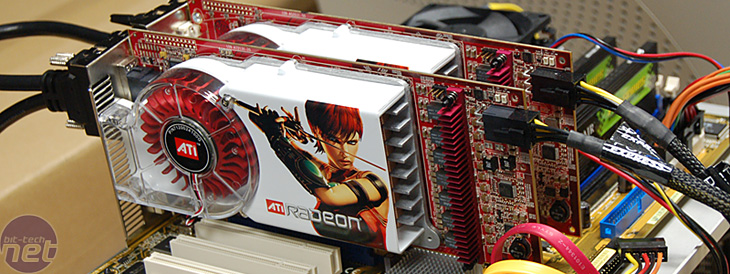Gameplay Evaluations - How We Tested:
Please be aware that the way we test our video cards is not a like-for-like comparison, and it is not meant to be. We decided to concentrate on finding the "Best Playable" settings - this means that we're finding the best possible gaming experience delivered on each different configuration. There are no timedemos used in our evaluations - we're focusing on the real-world gaming experience, which is, ultimately what should determine your next video card purchase.Rather than focusing on reporting the minimum and average frame rates for every configuration, we have decided to move the focus to resolution and settings. Thus, we are displaying our "Best Playable" resolutions and settings in a table that should be easier to understand than our previous format. If you take the logic that the higher the resolution and in game details, the faster the video card, you will not go far wrong.
We have also included a table of frame rates below the best-playable settings tables. These frame rates are recorded at the video card's best playable settings and should not be considered as an 'apples to apples' frame rate comparison, as they are far from that. Many readers have asked us to include frame rates, and we feel that this is the best compromise for the time being. We will look at improving this in future reviews and your feedback is more than welcome in the discussion thread.

ATI Radeon X1900-series System Setup
- ATI Radeon X1900XTX 512MB (operating at its default clock speeds of 650/1550MHz);
- ATI Radeon X1900 CrossFire 512MB (operating at its default clock speeds of 625/1450MHz).
NVIDIA GeForce 7800 GTX 512 System Setup
- 2 x EVGA GeForce 7800 GTX 512 (operating at their default clock speeds of 550/1700MHz);
The driver settings were left at their default settings unless otherwise stated with the exception of V-sync, which was disabled in all cases.
With both manufacturers implementing a dual card solution, the platform also forms an important part of the overall buying decision, as it's not possible to run CrossFire in an NVIDIA SLI motherboard or vice versa. Thus, if you have any intention of adding a second card after purchasing one or other, you'll need to make a decision on which platform you'll base your system around.
We use the following abbreviations on our best-playable settings tables:
- QA AA - Quality Adaptive Anti-Aliasing (ATI Radeon X1000 series);
- PA AA - Performance Adaptive Anti-Aliasing (ATI Radeon X1000 series);
- HQ AF - High Quality Anisotropic Filtering (ATI Radeon X1000 series).
- TSS AA - Transparency SuperSampled Anti-Aliasing (NVIDIA GeForce 7 series);
- TMS AA - Transparency MultiSampled Anti-Aliasing (NVIDIA GeForce 7 series);
- HQ Driver - High Quality Driver Settings to remove noticeable texture shimmering in certain titles (NVIDIA);

MSI MPG Velox 100R Chassis Review
October 14 2021 | 15:04







Want to comment? Please log in.